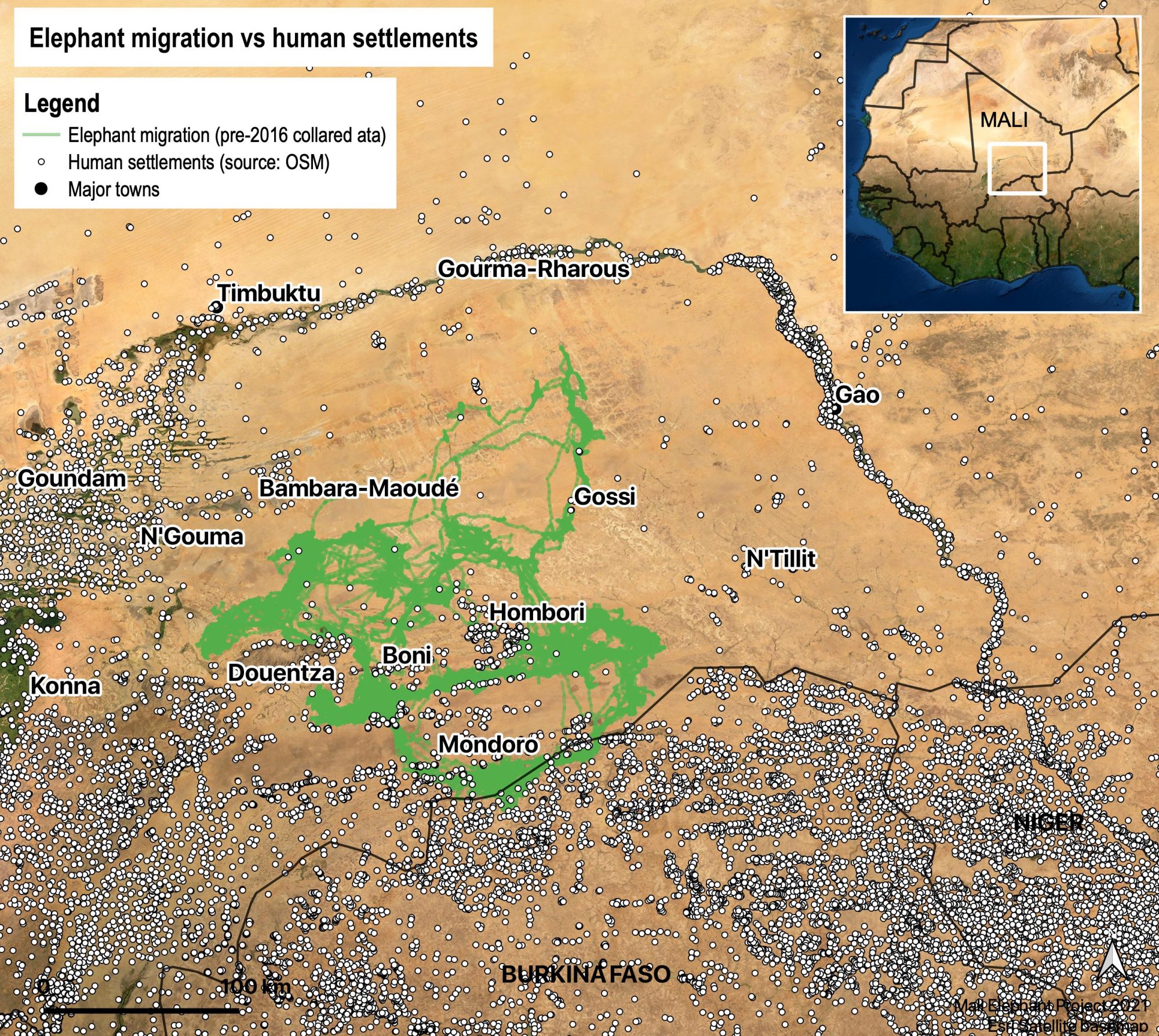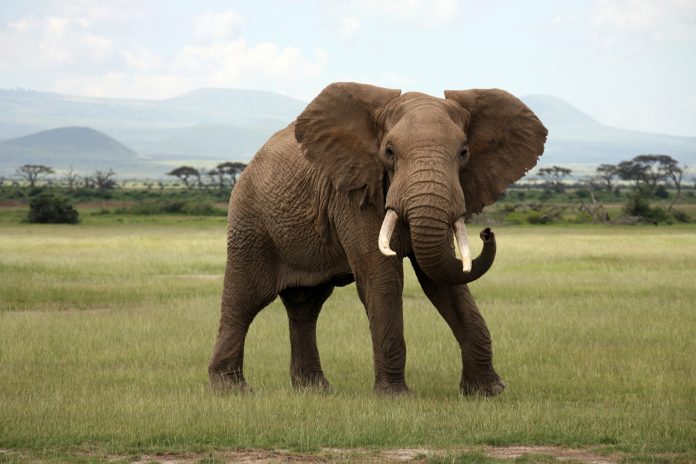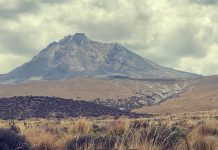What does it take for humans and elephants to live together? This was the question that has guided nearly 18 years of research and local engagement in the Gourma region of central Mali
The article begins with a section on the conservation landscape: a complex social-ecological system.
In 2003, it was known that the approximately 550 elephants made a roughly circular annual migration over a vast, arid area about the size of Belgium and Luxembourg combined (the largest recorded for elephants) in the Sahel of Mali; but it was unknown how they had survived when all around them had disappeared. GPS tracking data, combined with satellite imagery and data on the natural environment and human activity, showed their migration was centred around finding food, water and refuge while trying to avoid human activity (see figure) and identified the priority areas for conservation action.
The human environment was also complex with the coexistence of multiple ethnicities and livelihoods, including nomadic pastoralism, semi-nomadic pastoralism, agro-pastoralism, agriculture, and irrigated gardens around water. Habitat clearance for agriculture and irrigated gardens removed elephant habitat and obstructed access to water, rendering crops vulnerable to trampling and hungry elephants; while ever-increasing numbers of cattle put pressure on water sources, soils and vegetation.
Understanding the social landscape and local values
Given the lack of resources and political will, it was difficult to know what to do. More information was required about this social-ecological system, and so we launched a programme of stakeholder meetings that included community leaders (traditional and elected), government, NGOs, development projects and programmes, supplemented by an attitude survey to understand local perceptions.
Elephants were valued for multiple reasons, but most particularly because “if elephants disappear it means the environment is no longer good for us”. The disappearance of elephants was seen as an indicator of a degraded environment that was less able to support human life (an understanding that is not commonplace in western societies). They also understood that human activity needed to respect environmental limits. Yet despite this, the environment was clearly degraded and over-exploited.
Subsequent studies revealed two key findings. The first was that 96% of the cattle belonged to distant wealthy urbanites who invested in cattle and sent them into more remote areas to find pasture and water. Many other natural resources (e.g. firewood and charcoal) were also harvested by urban commercial interests. The second finding was that although individual ethnicities had systems to manage their natural resources sustainably, each was reluctant to respect the systems of another, creating a “tragedy of the commons”.
A model for co-existence, improved livelihoods & ecological restoration
The project brought together the communities using a particular area to discuss the findings of these studies in the context of their daily lives. Once unified around a shared understanding of the problems, they proposed a solution that also respected the needs of elephants. Their solution was modelled on traditional governance systems whereby a representative management committee of elders set the rules of resource use and teams of young “ecoguards” patrol to ensure the rules are respected.
The protection of an area of pasture with firebreaks meant, for example, that abundant pasture was available close by, they could sell fodder and grazing/water access rights (with the cash benefits shared between the management committee, ecoguards and the women), and their own animals were healthier, more productive and fetched more at market. The protection of forest from clearance by outsiders meant that its resources of wood, forage, wild foods, medicines and other forest products (e.g. Gum Arabic and plant fibre) could form the basis of small income-generating schemes managed by women’s associations. This approach was possible because Mali’s decentralisation legislation puts natural resource management in the hands of local communities.

Conflict, insecurity, lawlessness & poaching
The conflict and lawlessness that have afflicted the area since 2012 brought elephant poaching. Once again, the project worked with local communities to mitigate the threat. Particularly important was the further recruitment of ecoguards across the elephant range to detect poaching incidences and conduct resource protection activities. None joined the armed groups, despite the large amounts paid, as being an ecoguard carried significant local status because they were helping their communities. It was also less risky.
Poaching was very limited for the first three years until the epicentre of the conflict shifted into the elephant range and the subsequent escalation in elephant killing required a government enforcement unit. This took two years to fully mobilise during which time around 160 elephants were lost, but since then numbers killed have remained at very low levels. This could not have been achieved without local support for elephant conservation.
New protected area
The project is always seeking ways to strengthen the enforcement of the community systems, for example through working with government to designate a protected area that covers the whole of the elephant range, with strictly protected core areas surrounded by multi-use areas enforced by the local community agreements. This legislation gives government rangers the mandate to support local communities in the enforcement of their resource management systems.

Many conservation tools are used during this project, with the selection guided by an adaptive “complex systems” approach. As a result, elephant conservation was accompanied by improved livelihoods, occupations for youth, ecological restoration, improved social cohesion and ecosystem resilience, despite conflict and insecurity.
What is happening in the Gourma is a microcosm of the environmental crisis we all face across the planet, albeit in a less direct manner. In the four subsequent issues of this publication, particular aspects of the experience will be explored in more detail.
*Please note: This is a commercial profile
References:
(2021) Making Space for Nature: Elephant Conservation in Mali as a Case Study in Sustainability. Environment: Science and Policy for Sustainable Development, 63:2, 4-15, DOI: 10.1080/00139157.2021.1871292











